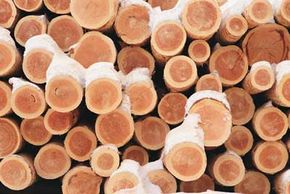It's cold outside, and you're hauling firewood. But you forgot to wear gloves. Suddenly, you feel a sharp pain in your hand -- yep, you've got a sliver.
Essentially, a sliver (or splinter) is a puncture wound with debris in it -- in this example, a sliver of wood. You can, of course, also get slivers of glass, metal, or plastic, but wood slivers are by far the most common.
Advertisement
While a cut is a vertical slice into the skin and a scrape is the horizontal removal of a patch of outer skin, a puncture wound is a stab deep into the tissue. In the case of a sliver, it's the foreign object -- the sliver -- that causes the puncture and stays in the tissue. Most slivers aren't serious and can be treated at home. Read the following home remedies to learn how.
Tweeze it. If a sliver is sticking out of the skin, you're in luck. Simply sterilize the tips of a pair of tweezers with alcohol, carefully pinch the sliver as close to the skin as possible, and gently slide the sliver out.
Needle it. When slivers don't stick out of the skin, you'll need a needle instead of tweezers. After sterilizing it with alcohol, use the needle's tip to push the sliver from the bottom (the end that entered the skin first) upward toward the puncture hole in the skin's surface. Be sure to start at the very bottom of the sliver, or you risk breaking it and leaving sliver shreds in the skin.
Slice it. Too often, slivers are in deep and people poke and prod with tweezers, only to end up bruising the tissue all around the sliver site. In this case, neither tweezers nor a needle will do. Instead -- trust us, this isn't nearly as scary as it sounds -- you need a new razor blade. After sterilizing the blade with alcohol, make a shallow incision parallel to the sliver, just above it.
While you may flinch just thinking about cutting your skin (or someone else's), keep in mind that the top layer of your hide is made of dead tissue. In other words, such a small incision is not likely to hurt at all. Once the incision is made, gently part the skin and pick out the sliver.
Clean it. No matter which method you use, once you've got the sliver out, clean the wound well with soap and water. Be thorough; puncture wounds laced with lingering bacteria are more likely to become infected. Once the wound is clean, dab on a small amount of hydrogen peroxide, which will help clear out any remaining debris and help it heal faster.
Squeeze on the antibacterial ointment. If the wound hasn't immediately closed up or if you've used the slice technique to remove the sliver, apply an over-the-counter antibacterial ointment (such Neosporin, Polysporin, or an equivalent product) and cover with a bandage.
Advertisement
